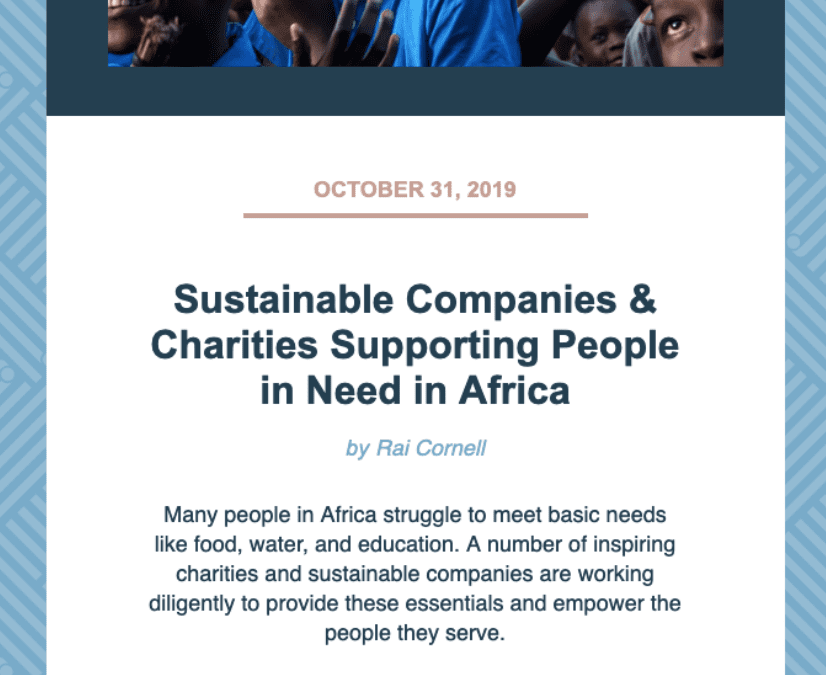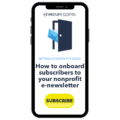Email must be an active part of your fundraising and marketing efforts. It’s one-to-one communication, it can be personalized and it’s a fantastic platform for educating, raising awareness, mobilizing people to take action, encouraging subscribers to become donors and sharing with supporters how their gift is impacting their community.
Just as you work hard at composing and editing your direct mail fundraising letters, you have to put the same effort and care into your emails. You need to craft a content strategy which outlines the type of content you want subscribers to read and react to.
This list contains 40 email tips. I have taken 10 which apply to nonprofits and explained how each tip can help you build relationships with subscribers.
Improve Your Email
- The more ideas you try to communicate in a single email, the more likely one will be overlooked.
When I see enewsletters with 17 different articles, topics and calls to action, I delete. People look at emails for 5-10 seconds. If they start scrolling and it looks like the scrolling will never end, they’ll bounce.
When you send an email with a fundraising appeal or information about an event, that should be the only topic in the email. One thing. Keep it focused!

See the above email? This is a good example of what an email should look like. A great hero image at the top to capture a reader’s attention, some verbiage and then a call-to-action. Simple layout, easy to read.
- You don’t need to sign your name at the end of your email — the recipient knows who it’s from.
I disagree with this one but let me explain.
One of the most important parts of your email is who is sending it. If it’s from a person at your organization, higher likelihood the email will be opened. If the receiver doesn’t recognize who it’s from, chances go way down for an open.
Once it’s opened, the email should be one-to-one communication. If you have the subscriber’s first name, use it! Address them at the opening of the email. Then at the end, have it signed by your CEO, fundraiser, event chairperson or person relevant to the email content.
Signing a name at the end of the email adds a wonderful personal touch. If email is about building relationships, sign it!
- The more your email sounds like you speak, the more effective it will be.
YES! Enough with the marketing speak!
Email should be a conversation. When talking to a friend, you would avoid using jargon, terms and words which you understand but would fly over your friend’s head. Same with email. Don’t use terms related to your cause that readers will have a hard time understanding. Your goal is to simplify things.
Keep in mind how busy everyone is and the deluge of emails we all receive on a daily basis. If the verbiage in an email is too complicated to understand at a quick glance, subscribers won’t respond. Plain and simple.
- A good email with a bad subject line isn’t a good email.
35% of people decide whether to open an email based on the subject line alone. So if your subject line stinks, people won’t open your email, no matter how well-written it is.
I know you spend plenty of time crafting emails which will elicit a response. Sometimes your subject lines are an afterthought. You’re doing it wrong! Your subject lines have to shine. Pique a subscriber’s sense of curiosity, use a data point, ask a question are just three ways to convince someone to open the email.
- The longer your email, the less likely someone is to read every word.
People today read mainly by skimming. So although you spent a ton of time composing the email, they’re not going to read every word. Which means the shorter your message, the more they’ll see and read.
With direct mail, the longer the letter the higher the return. Email doesn’t work that way. Keep your message short and simple. Spell out the problem you’re asking subscribers to solve. Make it clear they can solve the problem by clicking the call-to-action button and donating. Simple and easy.
Next week I’ll look at 5 more email tips and how they apply to your organization’s fundraising and marketing.
Giving Tuesday and year-end fundraising are coming up fast. Your organization will be prompting people to donate online. But is your online donation form user friendly? Does it help or hurt your fundraising? Sign up today for my Online Donation Form Boost so you can raise more money from more people.




